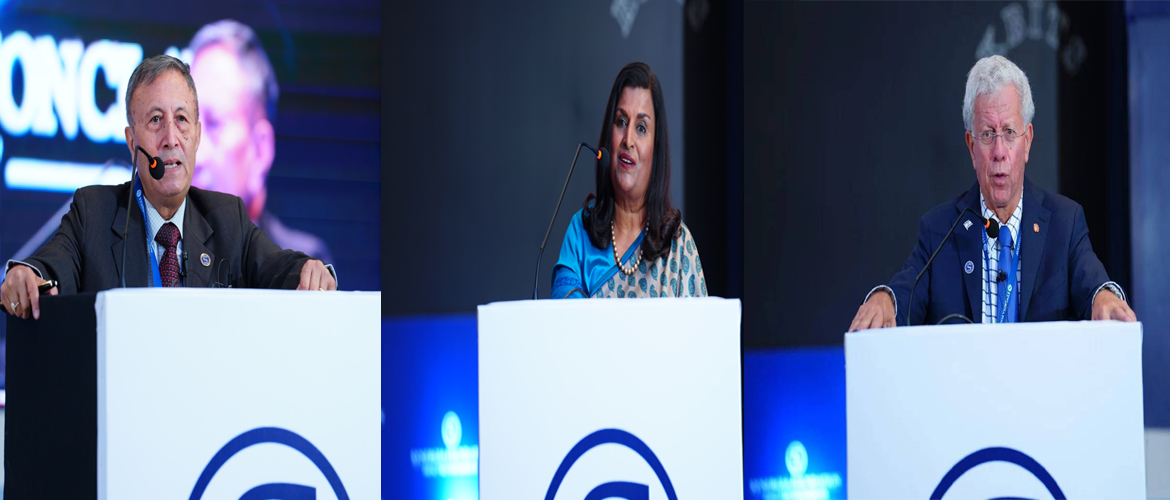Asymmetric conflicts
November 24, 2017 | Expert Insights

Inequality in arms, indeed, significant disparity between belligerents, has become a prominent feature of various contemporary armed conflicts. Such asymmetries, albeit is not at all a new phenomenon in the field of warfare, no longer constitute a random occurrence of singular battles.
At the Synergia Conclave – Security 360, three experts from the field spoke about the subject in-depth while culling from their own expertise. Major General, Yossi Ben Hanan, former Head of Israeli SIBAT, Dr Shekhar Dutt, former Governor of Chhattisgarh, former Deputy National Security Advisor & Defense Secretary, Government of India and Latha Reddy, former Deputy National Security Advisor, Government of India, all spoke on the issue.
Background
Asymmetric warfare (or asymmetric engagement) is war between belligerents whose relative military power differs significantly. It also refers to the kind of warfare where two or more military powers engage with strategies that are dissimilar. An asymmetric war generally takes place between an insurgency or resistance movement and a professional standing army part of a full-fledged government.
Victory in war does not always go to the militarily superior force. In the 6th century BC Darius I of Persia, at the head of the largest and most powerful army in existence at the time, was checked by the Scythians, who possessed a smaller but far more mobile force.
The primary difference between the two opponents in this form of warfare is the resources. They struggle, interact and attempt to exploit each other's characteristic weaknesses. The weaker combatants (in most cases this is the insurgency or resistance actors) use strategy to offset deficiencies in quantity or quality. They use tactics and strategies that are not prevalent in conventional warfare in order to overcome their weaknesses. This is in contrast to symmetric warfare, where two powers have similar military power and resources and rely on tactics that are similar overall, differing only in execution.
The term is also frequently used to describe what is called "guerrilla warfare", "insurgency", "terrorism", "counterinsurgency", and "counterterrorism", essentially violent conflict between a formal military and an informal, less equipped and supported, undermanned but resilient opponent. The 9/11 terrorist attacks and the war in Afghanistan are among the best-known recent examples of asymmetric warfare: conflicts between nations or groups that have disparate military capabilities and strategies.
Analysis
At the Synergia Conclave – Security 360, experts from the field spoke about the subject in-depth, including from their own experience. Dr. Shekhar Dutt began his session by remarking that if the world is to succeed, it has to learn from India and the way in which the country handles the multitudes that it possesses. A country full of natural wealth and human resources, alongside millennia of cultural heritage, “Free India”, he said – “has faced challenges that have seldom been faced by other countries.” He spoke in detail about the security challenges India faced from Pakistan, and the need to go deeper and find solutions to the asymmetric conflicts. Asymmetric conflicts, he said, are not causal events, but part of a bigger planning and execution. So as long as we make an effort to get a deeper understanding, we may be able to prevent the next one.
Maj. Gen Yossi Ben Hanan shared from his own experiences of being in thick of asymmetric warfare in Israel as a young soldier. He remarked that he “never participated in any war that was symmetric, and how much there was to learn from World War II."
Latha Reddy said that tactical success could depend on many factors. She noted that this “could depend on technological advantages; it could depend on targeting of critical infrastructure. It could also be achieved through training and technology together.” She noted that military superiority and military success no longer “counts as it used to.”
Assessment
Our assessment is that as insurgency continues to grow across the world, nations should begin addressing these threats by doing more than expanding the size of the military. Technology, especially the internet and social media, has fundamentally altered the battlefield. We believe that the most difficult challenge comes from hybrid foes that claim the trappings of statehood and political legitimacy while relying on terrorist tactics. India, in particular, is highly vulnerable to such attacks and there ought to be a concerted effort to gain a deeper understanding of insurgents and their motives in order to prevent the next one. Asymmetric warfare does not merely pose military challenges but can also threaten to erode the core values of a liberal democracy as governments seek to protect its citizens against terrorist attacks.








Comments